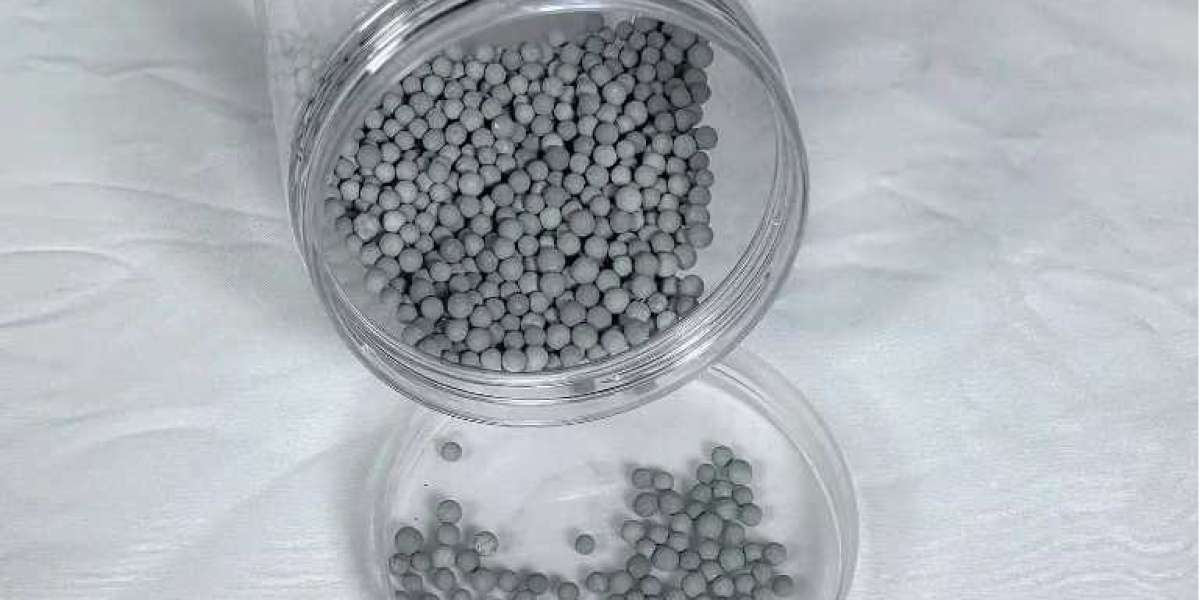Methane (CH4) is a major component of natural gas and plays a crucial role in the global energy landscape. However, as a potent greenhouse gas, its management and conversion are vital to both environmental sustainability and energy efficiency. Industrial methane conversion processes, such as steam methane reforming and catalytic methane decomposition, are integral to producing valuable chemicals and fuels. The development and application of advanced catalysts, particularly spherical methane catalysts, have significantly improved the efficiency and effectiveness of these processes. This article explores the applications of spherical methane catalysts in industrial methane conversion processes, their advantages, and future prospects.
Understanding Methane Conversion Processes
Methane conversion involves transforming methane into more valuable chemicals and fuels, which can be achieved through various methods:
1. Steam Methane Reforming (SMR)
Steam methane reforming is the most common industrial process for producing hydrogen from methane. In this process, methane reacts with steam at high temperatures (700-1000°C) in the presence of a catalyst to produce hydrogen, carbon monoxide, and a small amount of carbon dioxide. The reaction can be represented as follows:
CH4+H2O→CO+3H2
This endothermic reaction requires a catalyst to enhance the reaction rate and efficiency.
2. Catalytic Partial Oxidation (CPOX)
Catalytic partial oxidation is another method for converting methane into synthesis gas (syngas), a mixture of hydrogen and carbon monoxide. In this process, methane reacts with a limited amount of oxygen:
CH4+21O2→CO+2H2
This exothermic reaction is quicker than SMR and is used to produce syngas for further chemical synthesis.
3. Catalytic Methane Decomposition (CMD)
Catalytic methane decomposition is an emerging method that produces hydrogen and carbon nanomaterials. In this process, methane is decomposed over a catalyst to yield hydrogen and solid carbon:
CH4→C+2H2
CMD offers the advantage of producing hydrogen without carbon dioxide emissions, making it an environmentally friendly alternative.
Spherical Methane Catalysts: An Overview
Spherical methane catalysts are designed to optimize the efficiency and effectiveness of methane conversion processes. These catalysts are characterized by their spherical shape, high surface area, and unique structural properties that enhance catalytic performance.

Characteristics of Spherical Methane Catalysts
High Surface Area: The spherical shape provides a high surface area-to-volume ratio, maximizing the active sites available for reactions.
Enhanced Heat and Mass Transfer: The spherical geometry facilitates better heat and mass transfer, which is critical for endothermic and exothermic reactions.
Structural Stability: Spherical catalysts offer improved mechanical strength and resistance to attrition, extending their operational lifespan.
Uniform Particle Size: Consistent particle size distribution ensures uniform flow and distribution in reactors, reducing pressure drop and improving efficiency.
Materials Used in Spherical Methane Catalysts
Several materials are used to manufacture spherical methane catalysts, including:
Metal Oxides: Alumina, zirconia, and titania are commonly used as supports for active metals.
Transition Metals: Nickel, cobalt, and iron are frequently used as active components due to their catalytic properties.
Noble Metals: Platinum, palladium, and rhodium are used for their superior catalytic activity, though they are more expensive.
Applications of Spherical Methane Catalysts
Spherical methane catalysts find application across various industrial processes due to their enhanced catalytic performance and adaptability.
1. Steam Methane Reforming
In steam methane reforming, spherical catalysts are utilized to improve hydrogen yield and process efficiency. The high surface area and uniform distribution of active sites in spherical catalysts enhance methane conversion rates, reduce energy consumption, and extend catalyst life. Furthermore, their stability under high temperatures and pressures makes them suitable for prolonged operation in SMR reactors.
2. Catalytic Partial Oxidation
Spherical catalysts are also employed in catalytic partial oxidation to produce syngas. The improved heat transfer and structural integrity of these catalysts enable efficient and stable syngas production. Their resistance to thermal shock and mechanical stress makes them ideal for CPOX processes that involve rapid temperature fluctuations.
3. Catalytic Methane Decomposition
In catalytic methane decomposition, spherical catalysts play a critical role in maximizing hydrogen production while capturing carbon in solid form. The uniform structure of spherical catalysts facilitates the dispersion of active metal sites, promoting efficient methane decomposition. Additionally, the ability to produce valuable carbon nanomaterials alongside hydrogen presents economic and environmental benefits.
4. Direct Methane Conversion
Direct methane conversion aims to convert methane into more complex hydrocarbons and chemicals without intermediate steps. Spherical catalysts with unique active sites and optimized reaction pathways are being developed to facilitate this direct conversion. The potential to produce value-added chemicals directly from methane presents significant opportunities for sustainable industrial processes.

Advantages of Spherical Methane Catalysts
Spherical methane catalysts offer several advantages over traditional catalysts, contributing to their growing adoption in industrial applications.
1. Enhanced Catalyst Efficiency
The high surface area and uniform distribution of active sites in spherical catalysts lead to higher reaction rates and improved efficiency in methane conversion processes. This efficiency reduces the energy required for reactions and increases the overall yield of desired products.
2. Improved Catalyst Longevity
Spherical catalysts exhibit superior structural stability and resistance to deactivation, resulting in a longer operational lifespan. This longevity reduces the frequency of catalyst replacement and maintenance, lowering operational costs and downtime.
3. Versatility Across Processes
The adaptable design of spherical catalysts allows them to be tailored for various methane conversion processes, enhancing their versatility and applicability. This flexibility enables industries to optimize their processes for specific needs and objectives.
4. Environmental Benefits
Spherical methane catalysts contribute to more sustainable industrial processes by improving efficiency and reducing emissions. Their role in CMD, in particular, offers a pathway to hydrogen production without carbon dioxide emissions, aligning with global sustainability goals.
Conclusion
Spherical methane catalysts play a pivotal role in advancing industrial methane conversion processes, offering enhanced efficiency, versatility, and sustainability. Their unique design and properties enable industries to optimize methane utilization, contributing to energy efficiency and environmental stewardship. As research and innovation continue to drive improvements in catalyst performance, spherical methane catalysts are poised to play an increasingly significant role in shaping the future of industrial processes. Through collaboration and innovation, industries can harness the potential of these catalysts to achieve a more sustainable and efficient energy landscape.
Exploring the Applications of Spherical Methane Catalysts in Energy and Environment








